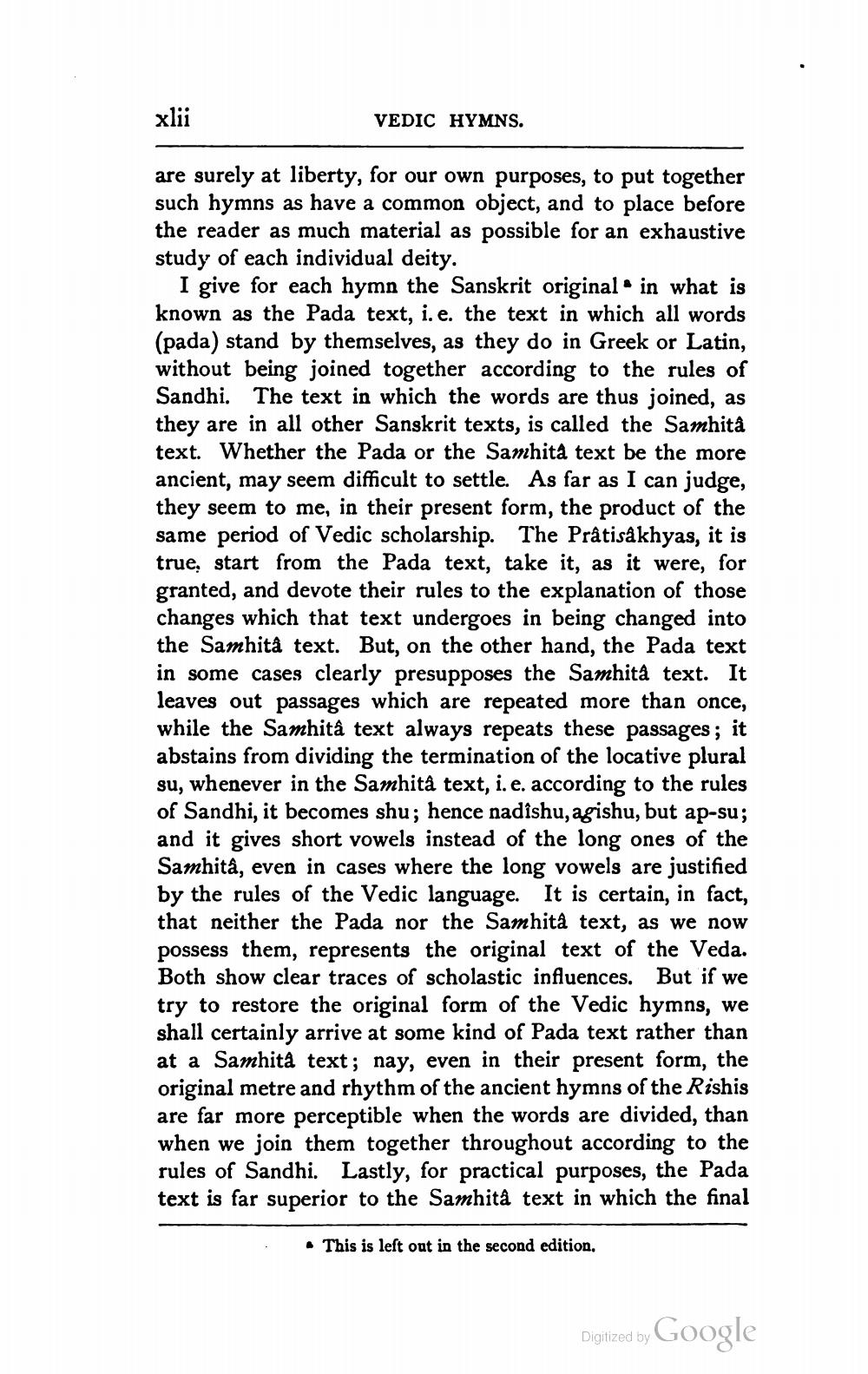________________
xlii
VEDIC HYMNS.
are surely at liberty, for our own purposes, to put together such hymns as have a common object, and to place before the reader as much material as possible for an exhaustive study of each individual deity.
I give for each hymn the Sanskrit original in what is known as the Pada text, i. e. the text in which all words (pada) stand by themselves, as they do in Greek or Latin, without being joined together according to the rules of Sandhi. The text in which the words are thus joined, as they are in all other Sanskrit texts, is called the Samhitâ text. Whether the Pada or the Samhitâ text be the more ancient, may seem difficult to settle. As far as I can judge, they seem to me, in their present form, the product of the same period of Vedic scholarship. The Prâtisâkhyas, it is true, start from the Pada text, take it, as it were, for granted, and devote their rules to the explanation of those changes which that text undergoes in being changed into the Samhitâ text. But, on the other hand, the Pada text in some cases clearly presupposes the Samhitâ text. It leaves out passages which are repeated more than once, while the Samhitâ text always repeats these passages; it abstains from dividing the termination of the locative plural su, whenever in the Samhitâ text, i. e. according to the rules of Sandhi, it becomes shu; hence nadîshu, agishu, but ap-su; and it gives short vowels instead of the long ones of the Samhitâ, even in cases where the long vowels are justified by the rules of the Vedic language. It is certain, in fact, that neither the Pada nor the Samhitâ text, as we now possess them, represents the original text of the Veda. Both show clear traces of scholastic influences. But if we try to restore the original form of the Vedic hymns, we shall certainly arrive at some kind of Pada text rather than at a Samhitâ text; nay, even in their present form, the original metre and rhythm of the ancient hymns of the Rishis are far more perceptible when the words are divided, than when we join them together throughout according to the rules of Sandhi. Lastly, for practical purposes, the Pada text is far superior to the Samhitâ text in which the final
This is left out in the second edition.
Digitized by Google




